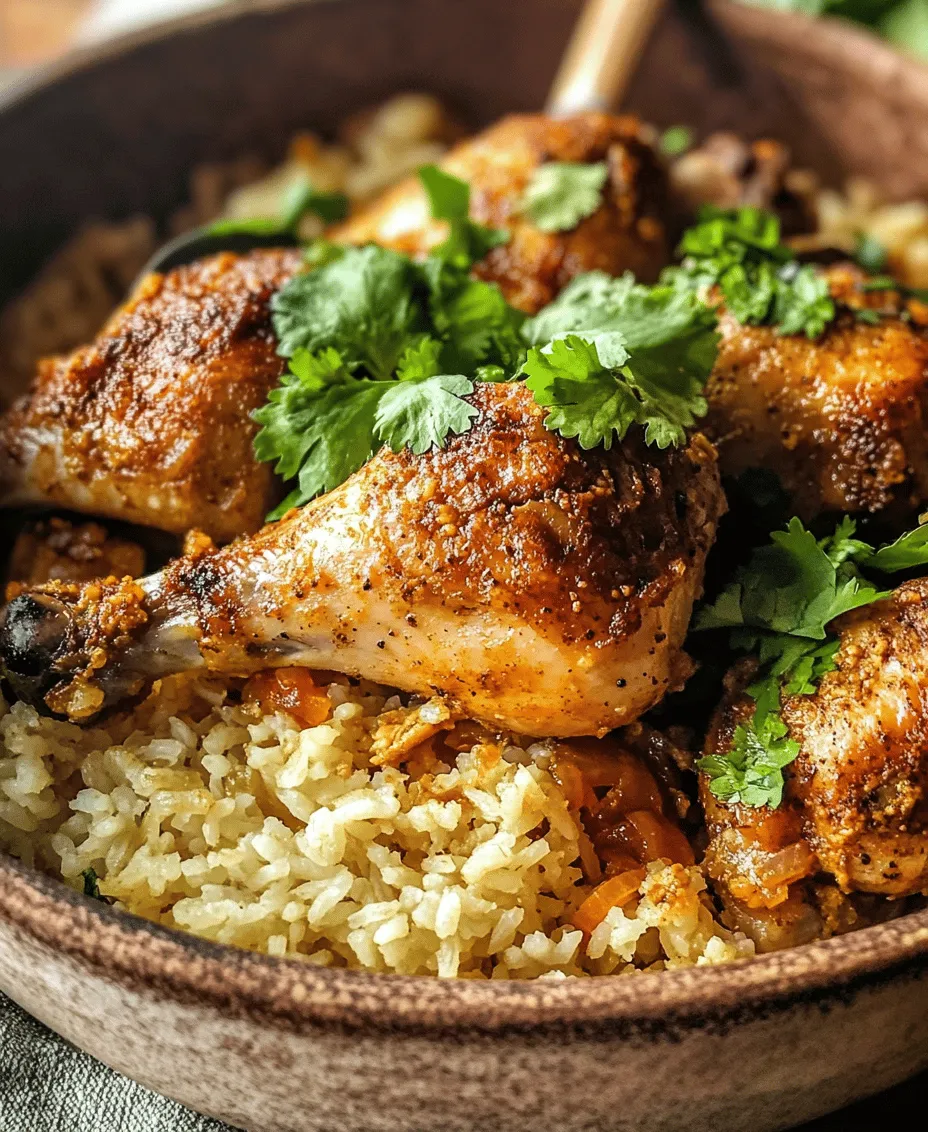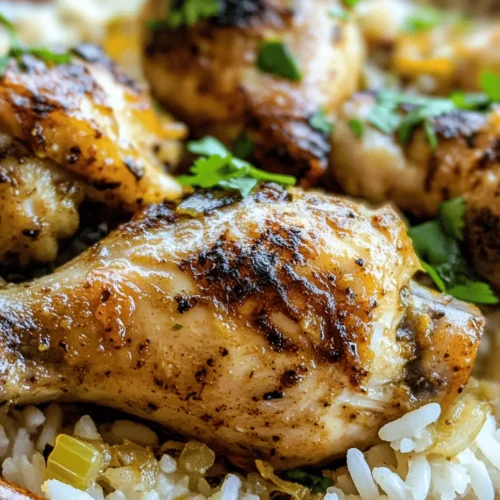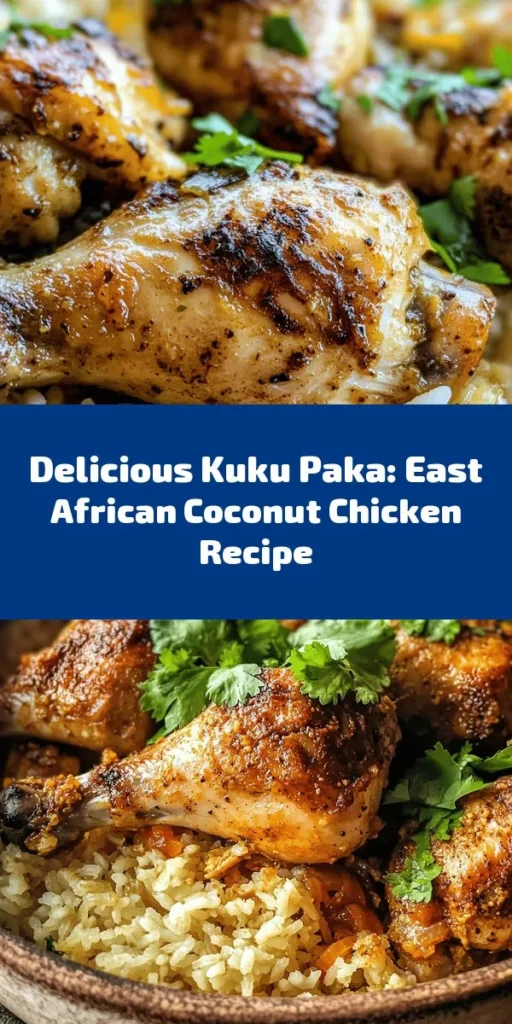Introduction
Kuku Paka is a traditional East African dish that embodies the rich culinary heritage of the region, particularly thriving in countries like Kenya and Tanzania. This delicious coconut chicken recipe is not only flavorful but also offers a comforting experience that brings friends and family together around the dining table. With its origins rooted deeply in Swahili culture, Kuku Paka showcases the use of coconut milk, which is a staple in East African cuisine. The creamy texture and wholesome flavor of coconut milk elevate the dish, making it a standout among other chicken recipes.
The appeal of Kuku Paka lies in its ability to balance spices and sweetness while remaining nourishing and satisfying. Whether it’s a family gathering, a festive celebration, or simply a delightful weeknight dinner, this dish is often the star of the meal. With its aromatic spices and rich coconut sauce, Kuku Paka is a culinary journey that captures the heart and soul of East African cooking.
The Essence of Kuku Paka
The history of Kuku Paka can be traced back to the coastal regions of East Africa, where the influence of Indian, Arab, and indigenous culinary traditions intertwine to create a unique gastronomic experience. The dish’s name, “Kuku” meaning chicken and “Paka” meaning to coat or smear, reflects its preparation method—chicken is marinated and then simmered in a flavorful coconut sauce. This fusion of cultures is evident in the use of spices, herbs, and cooking techniques that have been passed down through generations.
Regional variations of Kuku Paka exist across East Africa, with each area adding its own twist to the traditional recipe. In Kenya, for example, the dish often features a robust blend of spices that can vary significantly depending on the cook’s preferences. In Tanzania, the preparation may include a slightly sweeter coconut sauce, influenced by the natural sweetness of local ingredients. Regardless of the regional differences, Kuku Paka has maintained its status as a beloved dish, often served during special occasions such as weddings, holidays, and family gatherings. This cultural significance highlights the importance of food in fostering community and celebrating life’s milestones.
Key Ingredients and Their Roles
To create an authentic Kuku Paka, it is essential to select the right ingredients that contribute to the dish’s depth of flavor and character. Here are the key components that make Kuku Paka a true delight:
Whole Chicken
Using a whole chicken instead of chicken pieces is a crucial aspect of preparing Kuku Paka. The whole chicken not only provides a more succulent and juicy texture but also allows for a more even distribution of flavors throughout the dish. Slow-cooking the chicken allows it to absorb the aromatic spices and coconut milk, resulting in tender meat that falls off the bone. Additionally, using a whole chicken offers more opportunities for the rich flavors to penetrate, making every bite a burst of deliciousness.
Aromatics: Onion, Garlic, Ginger
The trio of onion, garlic, and ginger serves as the foundational flavor base for Kuku Paka. Onions add sweetness and depth, while garlic brings a bold, savory note. Fresh ginger contributes a warm, aromatic spiciness that complements the other flavors beautifully. Together, these aromatics create a fragrant backdrop that enhances the overall profile of the dish, ensuring that every spoonful is packed with flavor. Beyond their flavor contributions, these ingredients also carry health benefits, including anti-inflammatory properties and digestive support, making Kuku Paka as nutritious as it is delicious.
Green Chilies
Green chilies are a key ingredient in Kuku Paka, providing a necessary kick of heat that balances the richness of the coconut milk. The level of spiciness can be adjusted according to personal preference, allowing cooks to tailor the dish to their liking. While adding heat, green chilies also contribute a fresh, vibrant flavor that elevates the overall dish. Whether you prefer it mild or fiery, the choice of chilies plays a significant role in achieving the desired flavor profile.
Spices: Turmeric, Coriander, Cumin
The use of spices is integral to the essence of Kuku Paka. Turmeric offers a warm, earthy flavor and a brilliant golden hue, while coriander adds a citrusy, slightly sweet note. Cumin contributes a nutty, aromatic depth that rounds out the spice blend. These spices not only create a robust flavor profile but also carry numerous health benefits, including anti-inflammatory properties, digestive support, and antioxidant effects. The careful balance of these spices is what makes Kuku Paka truly memorable, transforming simple ingredients into a flavorful masterpiece.
Coconut Milk
Coconut milk is the star ingredient in Kuku Paka, bringing a rich creaminess that elevates the dish to new heights. It serves as a luxurious sauce, enveloping the chicken and infusing it with a delightful sweetness that contrasts beautifully with the spices. Nutritionally, coconut milk is a source of healthy fats, promoting heart health and providing a creamy texture without the need for dairy. Its versatility allows it to be used in both savory and sweet dishes, making it a staple in many East African recipes. In Kuku Paka, the coconut milk harmonizes with the spices, creating a luscious sauce that is perfect for spooning over rice or enjoying with flatbreads.
In summary, the combination of a whole chicken, aromatic ingredients, vibrant spices, and creamy coconut milk creates a dish that is not only satisfying but also a celebration of East African culinary traditions. Whether you’re new to Kuku Paka or a seasoned enthusiast, this recipe promises to deliver a delightful experience filled with flavor and comfort.
Next, we will delve into the step-by-step instructions to prepare this exquisite coconut chicken delight, ensuring that every home cook can recreate this cherished dish with ease.

Lime or Lemon Juice: The Secret to Flavor Balance
In the world of cooking, acidity plays a pivotal role in balancing flavors. For our Kuku Paka, the addition of lime or lemon juice is not merely a flavor enhancer; it is a crucial element that brightens the dish and cuts through the richness of the coconut milk. The zesty acidity from lime or lemon adds a refreshing contrast to the savory notes of the chicken and spices, elevating the overall taste profile. Incorporating this ingredient just before serving ensures that the freshness is retained, enhancing the dish’s appeal.
Fresh Cilantro: A Flavorful Finish
Fresh cilantro is not just a garnish; it’s a vital component that enhances both the presentation and taste of Kuku Paka. The herb’s vibrant green color adds a visual pop to the dish, making it more inviting. Furthermore, cilantro brings a fresh, slightly citrusy flavor that complements the rich, creamy coconut sauce beautifully. When adding cilantro, consider chopping it coarsely to allow its aroma to infuse the dish. Sprinkle it generously over the Kuku Paka just before serving to impart a burst of freshness.
Step-by-Step Instructions for Making Kuku Paka
1. Marinating the Chicken
To achieve the most flavorful Kuku Paka, start by marinating the chicken. In a large bowl, combine your chicken pieces with a mixture of garlic, ginger, turmeric, cumin, paprika, and a generous amount of salt. Squeeze fresh lime or lemon juice over the chicken, ensuring each piece is well coated. Allow the chicken to marinate for at least 30 minutes, but for optimal flavor, refrigerate it for a few hours or overnight. This step infuses the spices into the chicken, creating a robust base for the dish.
2. Sautéing Aromatics
Once the chicken has marinated, it’s time to sauté the aromatics. Heat vegetable oil in a large pot or skillet over medium heat. Add finely chopped onions and cook until they become translucent and slightly caramelized, about 5-7 minutes. Next, add minced garlic and grated ginger, stirring continuously to prevent burning. This aromatic base is essential for building the flavor profile of Kuku Paka, so ensure the heat is not too high. The goal is to develop a rich, fragrant base that sets the stage for the chicken.
3. Browning the Chicken
Add the marinated chicken pieces to the pot, ensuring they do not overcrowd the pan. Brown the chicken on all sides, which should take about 10-12 minutes. This step is crucial as it develops a deep, savory flavor through the Maillard reaction. The browning adds complexity to the dish, creating a depth of flavor that will shine through in the final product. Once browned, remove the chicken from the pot and set it aside.
4. Cooking with Coconut Milk
In the same pot, pour in the coconut milk, scraping the bottom to deglaze any flavorful bits stuck to the pan. This enhances the sauce’s richness. Bring the coconut milk to a gentle simmer and then return the browned chicken to the pot. The chicken should be partially submerged in the coconut milk. Cover and cook on low heat for about 30-40 minutes, stirring occasionally. This slow cooking allows the chicken to tenderize while absorbing the creamy coconut flavors. Adjust the consistency of the sauce by adding water if it becomes too thick; you want it creamy but pourable.
5. Final Touches: Balancing Flavors with Lime Juice
As Kuku Paka nears completion, taste the sauce and adjust the seasoning as necessary. This is where the final splash of lime or lemon juice comes into play. Add it gradually, tasting as you go, until you reach the desired level of acidity. This balance is what makes Kuku Paka truly exceptional. Remove the pot from heat and stir in a handful of freshly chopped cilantro for added flavor and garnish.
Serving Suggestions
Kuku Paka is versatile when it comes to serving options. The traditional accompaniment is steamed rice, which soaks up the creamy coconut sauce beautifully. Alternatively, serve it with chapati, a type of unleavened flatbread that is perfect for scooping up the savory chicken and sauce. For a heartier meal, consider pairing it with a side of sautéed vegetables or a fresh salad to balance the richness of the dish.
When it comes to presentation, serve the Kuku Paka in a large bowl or on a platter, garnished with additional cilantro and lime wedges. This not only enhances the visual appeal but also invites your guests to enjoy the meal. For beverages, consider pairing Kuku Paka with a light beer or a refreshing mango juice. The sweetness of the juice complements the spices in the dish, creating a harmonious dining experience.
Nutritional Information
When enjoying Kuku Paka, it’s important to consider the nutritional aspects of the dish. A typical serving (about 1 cup) offers approximately:
– Calories: 350
– Protein: 25g
– Fat: 20g (mostly from coconut milk)
– Carbohydrates: 15g
– Fiber: 2g
Health Benefits: The ingredients in Kuku Paka provide various health benefits. Chicken is a great source of lean protein, which is essential for building and repairing tissues. Coconut milk contains medium-chain triglycerides (MCTs), which may aid in weight management and provide a quick source of energy. Furthermore, fresh herbs like cilantro are rich in antioxidants and vitamins A, C, and K.
Dietary Considerations: Kuku Paka can be easily adapted for various dietary restrictions. For a gluten-free option, serve with rice instead of chapati. If you’re looking to reduce calories or fat, consider using light coconut milk or reducing the amount of oil used in the sautéing process. For a vegan version, substitute chicken with tofu or chickpeas and use vegetable broth instead of chicken.
Conclusion
Making Kuku Paka is not just about preparing a meal; it’s about creating an experience that brings the flavors of East Africa to your table. This coconut chicken dish is not only delicious but also a wonderful way to connect with the rich culinary heritage of the region. Each bite is a reminder of the warmth and hospitality that characterizes East African culture.
By exploring recipes like Kuku Paka, you open the door to a world of flavors and traditions. Whether you’re enjoying it with family or sharing it with friends, this dish serves as a comforting meal that fosters connection and conversation. So gather your ingredients, embark on this culinary adventure, and relish the delight of making and sharing Kuku Paka—a truly memorable dish that celebrates the essence of East African cuisine.



